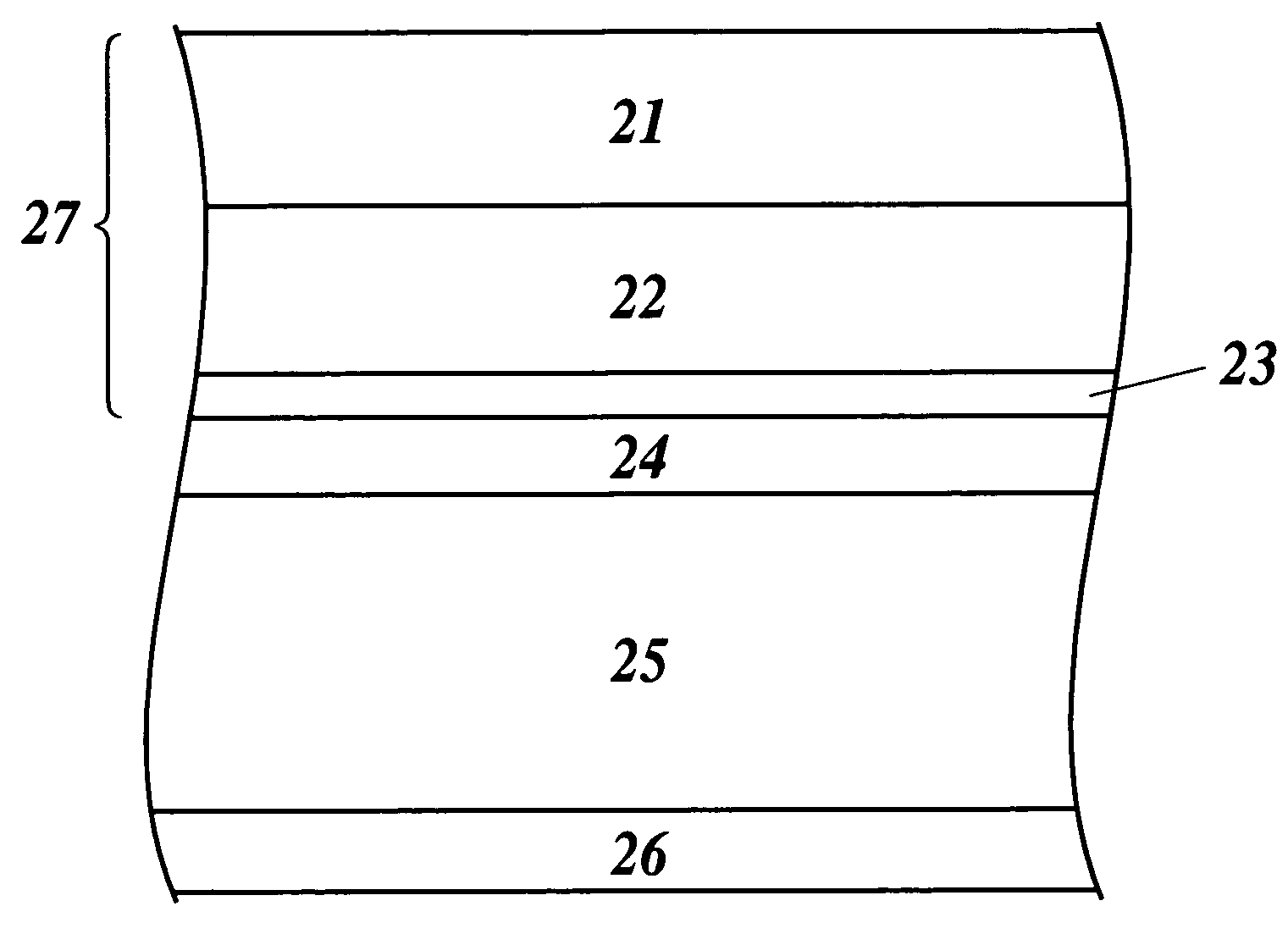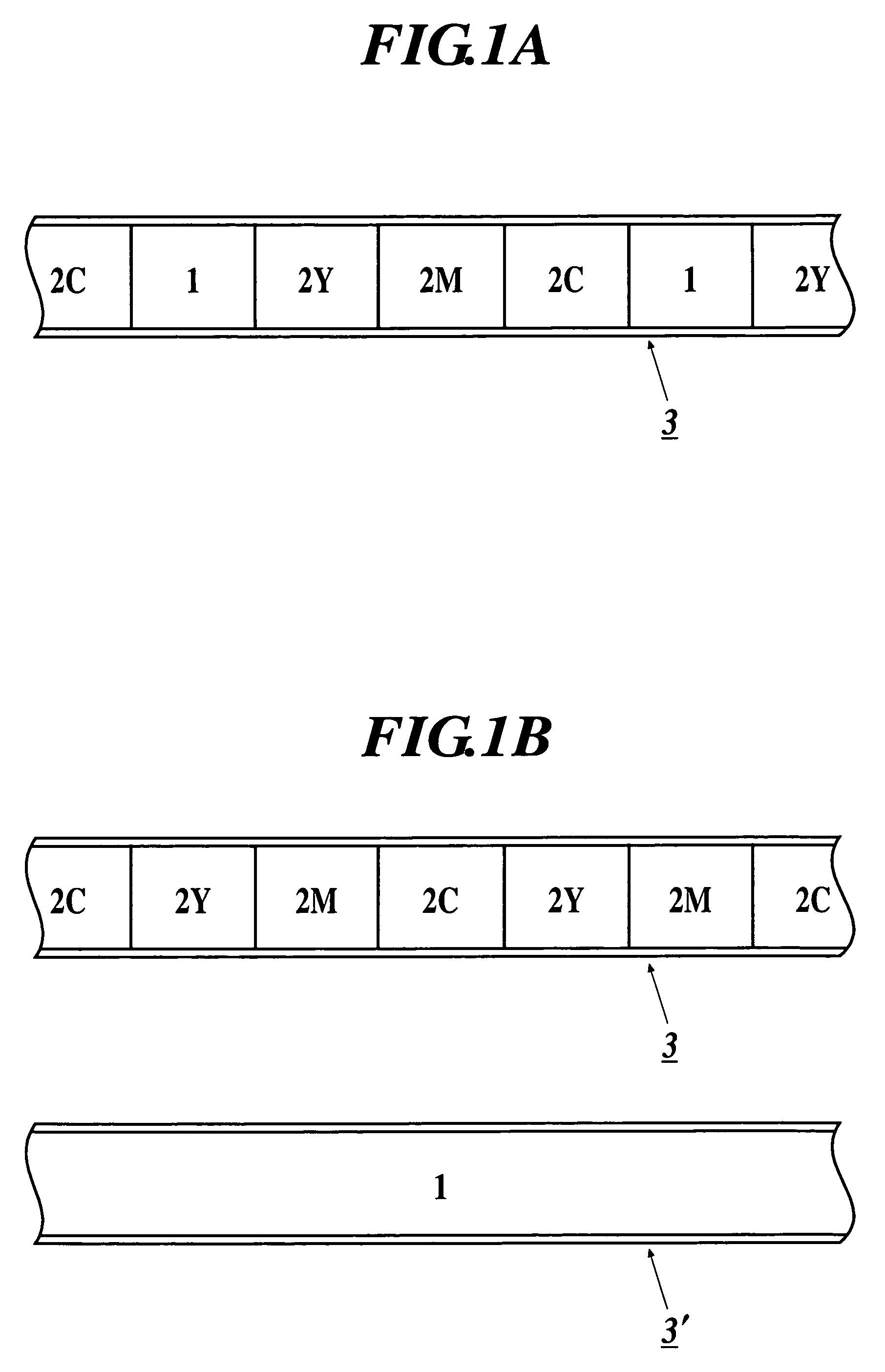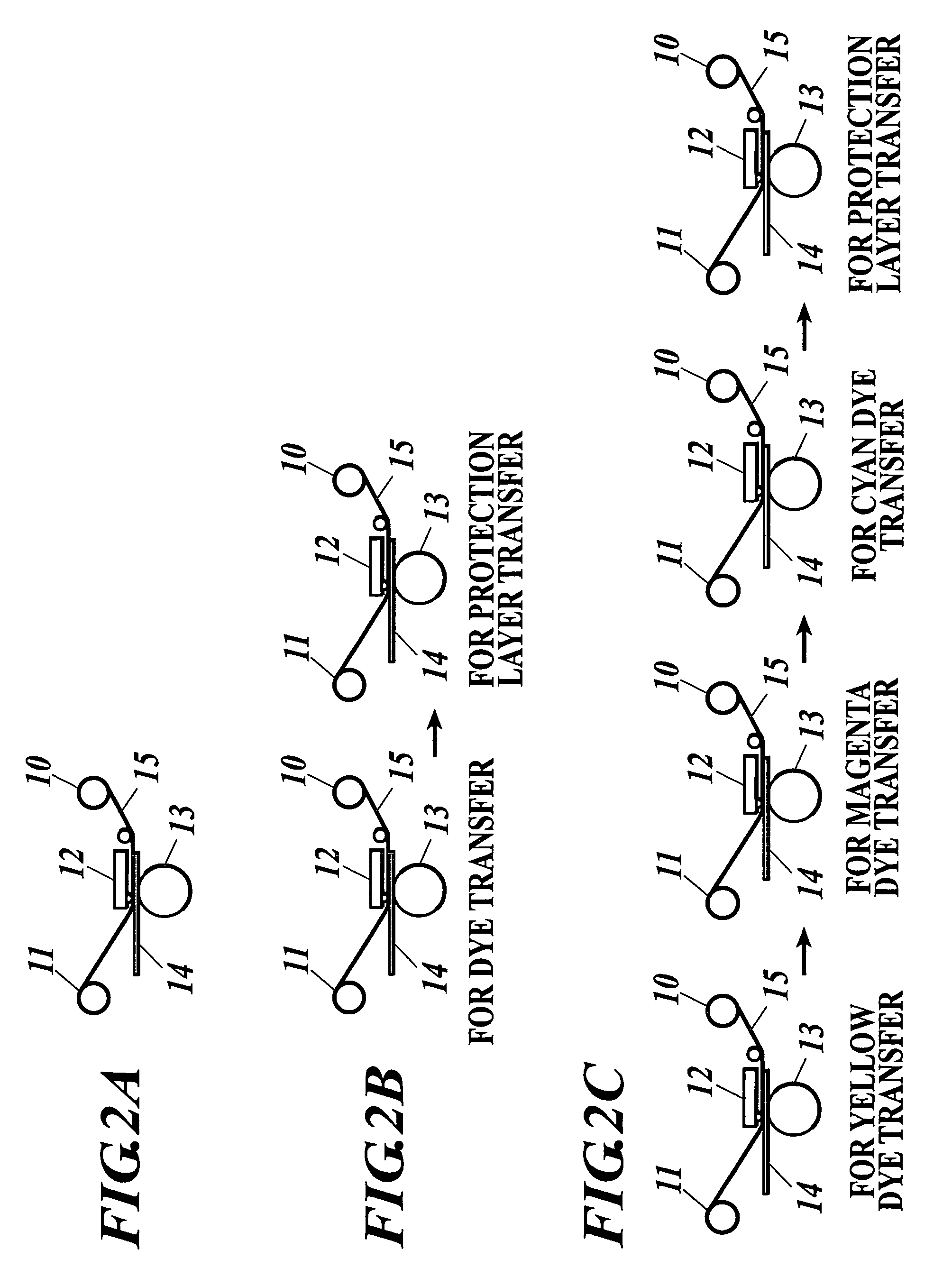Thermal transfer recording material and thermal transfer recording method
a technology of thermal transfer and recording material, which is applied in the direction of thermography, duplicating/marking methods, printing, etc., can solve the problems of insufficient improvement, insufficient storage stability under light irradiation (light resistance), and inability to absorb post-chelate colorants. , to achieve the effect of improving image bleeding, high sensitivity and high image quality
- Summary
- Abstract
- Description
- Claims
- Application Information
AI Technical Summary
Benefits of technology
Problems solved by technology
Method used
Image
Examples
synthesis examples
Synthesis Example 1
Synthesis of Exemplified Compound 47
[0050]Toluene (230 mL) was added into a reaction vessel into which 46 g (0.474 mol) of aminopyrazole (1), 75 g (0.4741 mol) of keto ester (2) and 10.8 g (0.05689 mol) of p-toluene sulfonate hydrate had been added, and was heated for 1.5 hours with distilling off water, methanol generated by the reaction and the solvent. When 150 mL of acetonitrile was added to the resulting oil product, crystal was precipitated, and thus, this was filtrated to yield 50.1 g of a colorant precursor (3).
[0051]Ethyl acetate (12 mL) was added to 3.47 g (0.01693 mol) of the colorant precursor (3), and further 5.38 g (0.05076 mol) of sodium carbonate, 2.5 g of Tracks K-40 (activator) and 1 mL of water were sequentially added thereto, and vigorously agitated in a 45° C. water bath for one hour. A solution in which 4.64 g of an aniline analogue (4) had been dissolved in 12 mL of water and a solution in which 10.3 g of sodium persulfate and 9.16 g of sodi...
synthesis example 2
Synthesis of Exemplified Compound 49
[0053]A colorant precursor was synthesized by the same formulation as in the exemplified compound 47, and the aniline analogue (4) was reacted to yield 4.49 g of the exemplified compound 49 (yield 65.1%). In an acetone solution, λmax of the exemplified compound 49 was 580 nm, its molar extinction coefficient (ε) was 48700, and its melting point was 243° C.
synthesis example 3
Synthesis of Structural Formula 1
[0054]A colorant precursor was synthesized by the same formulation as in the exemplified compound 47, and the aniline analogue (4) was reacted to yield 4.66 g of the structural formula 1 (yield 72.5%). In an acetone solution, λmax of the structural formula 1 was 580 nm, its molar extinction coefficient (ε) was 49700, and its melting point was 213° C.
[0055]The other exemplified compounds were synthesized by the same method.
[0056]The synthesized compounds are shown in Table 2.
[0057]
TABLE 2SYNTHESISCOLORANTMOLECULARMELTINGEXMAPLENO.WEIGHTλMAXεPOINTYIELD4 3435.658149300222° C.56.8%526407.5558050100205° C.46.3%633422.5257048900179° C.75.3%737437.5858251400211° C.60.2%846409.5258050900196° C.42.9%147379.558052300201° C.33.6%249407.5558048700243° C.65.1%963411.557247300226° C.78.9%3STRUCTURAL379.558049700213° C.72.5%FORMULA (1)
[0058]Subsequently, synthesis examples of the metal chelate colorants represented by the general formulae (2) to (6) will be shown.
PUM
| Property | Measurement | Unit |
|---|---|---|
| melting point | aaaaa | aaaaa |
| melting point | aaaaa | aaaaa |
| melting point | aaaaa | aaaaa |
Abstract
Description
Claims
Application Information
 Login to View More
Login to View More - R&D
- Intellectual Property
- Life Sciences
- Materials
- Tech Scout
- Unparalleled Data Quality
- Higher Quality Content
- 60% Fewer Hallucinations
Browse by: Latest US Patents, China's latest patents, Technical Efficacy Thesaurus, Application Domain, Technology Topic, Popular Technical Reports.
© 2025 PatSnap. All rights reserved.Legal|Privacy policy|Modern Slavery Act Transparency Statement|Sitemap|About US| Contact US: help@patsnap.com



